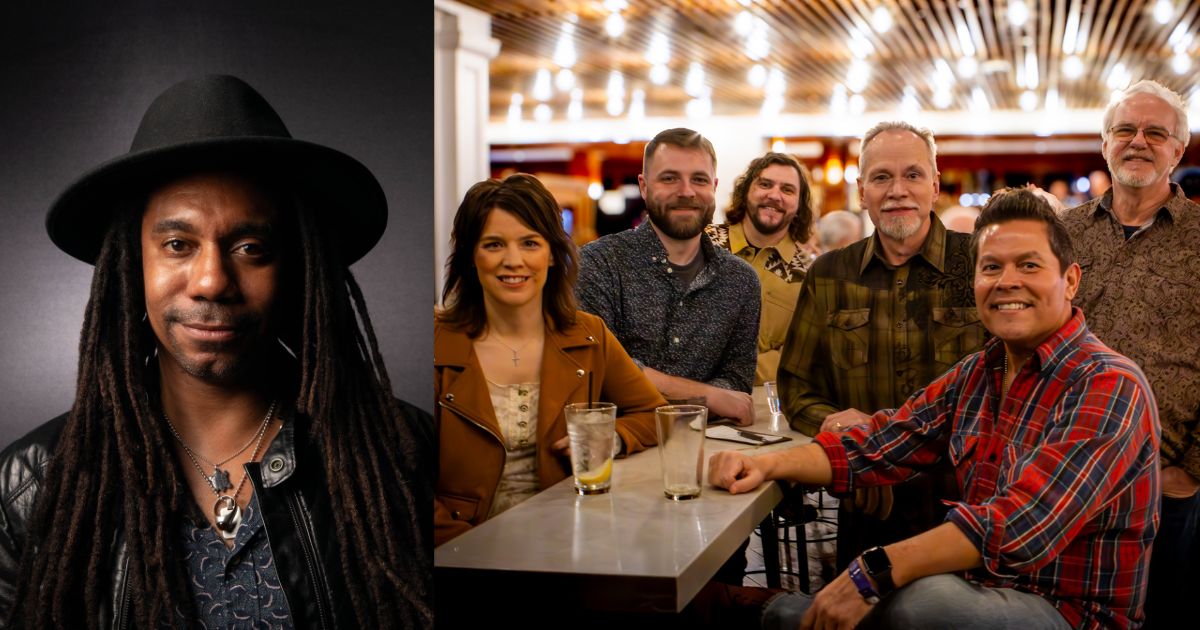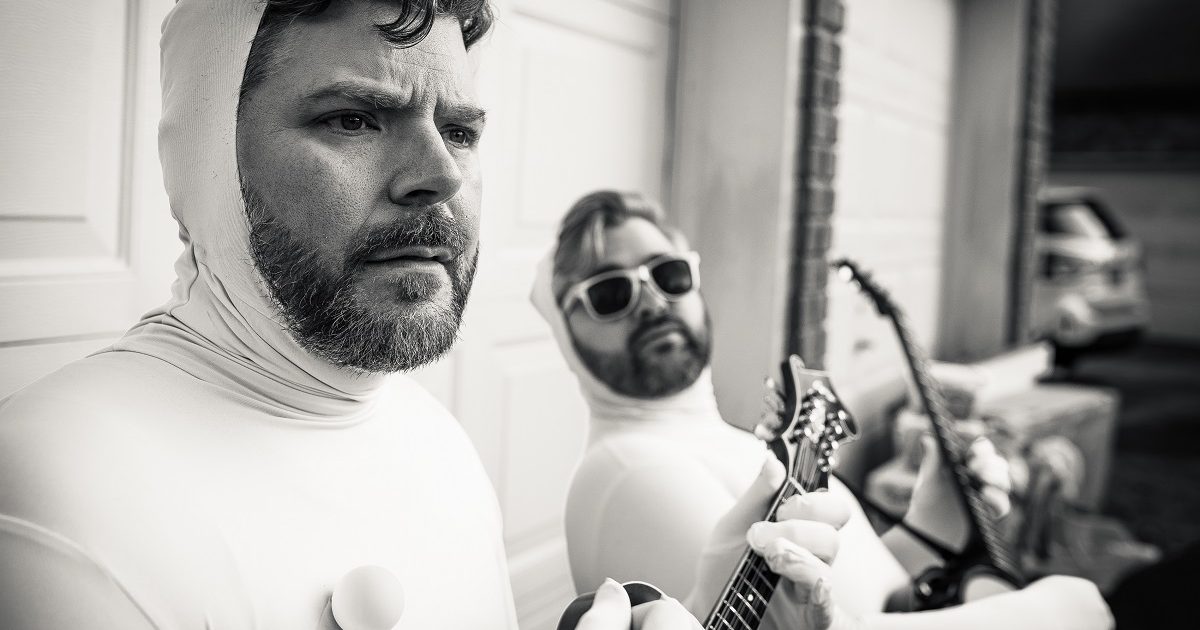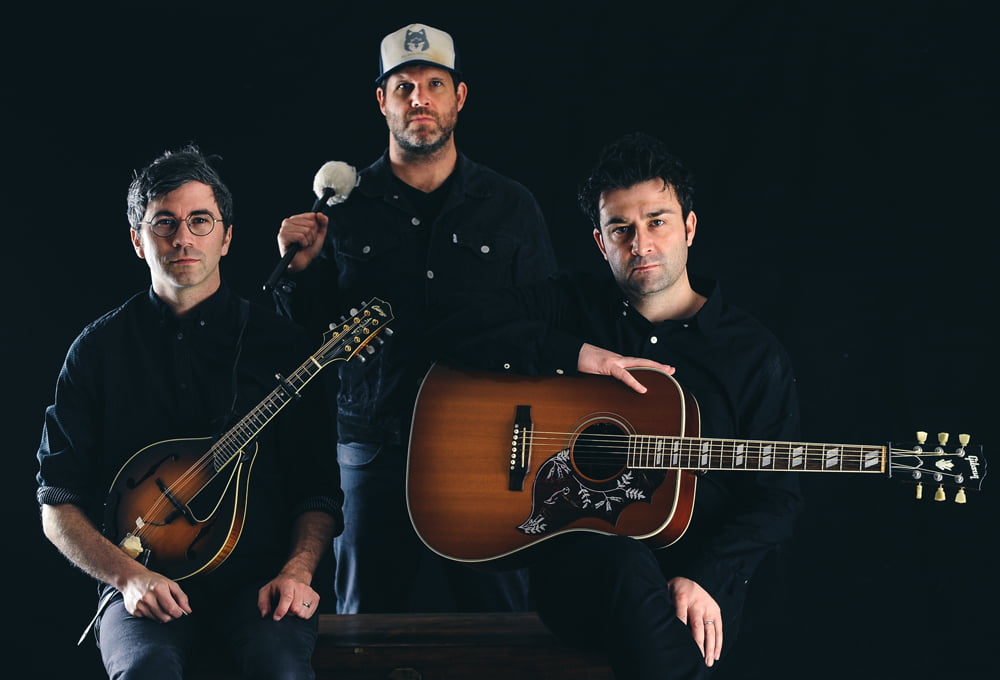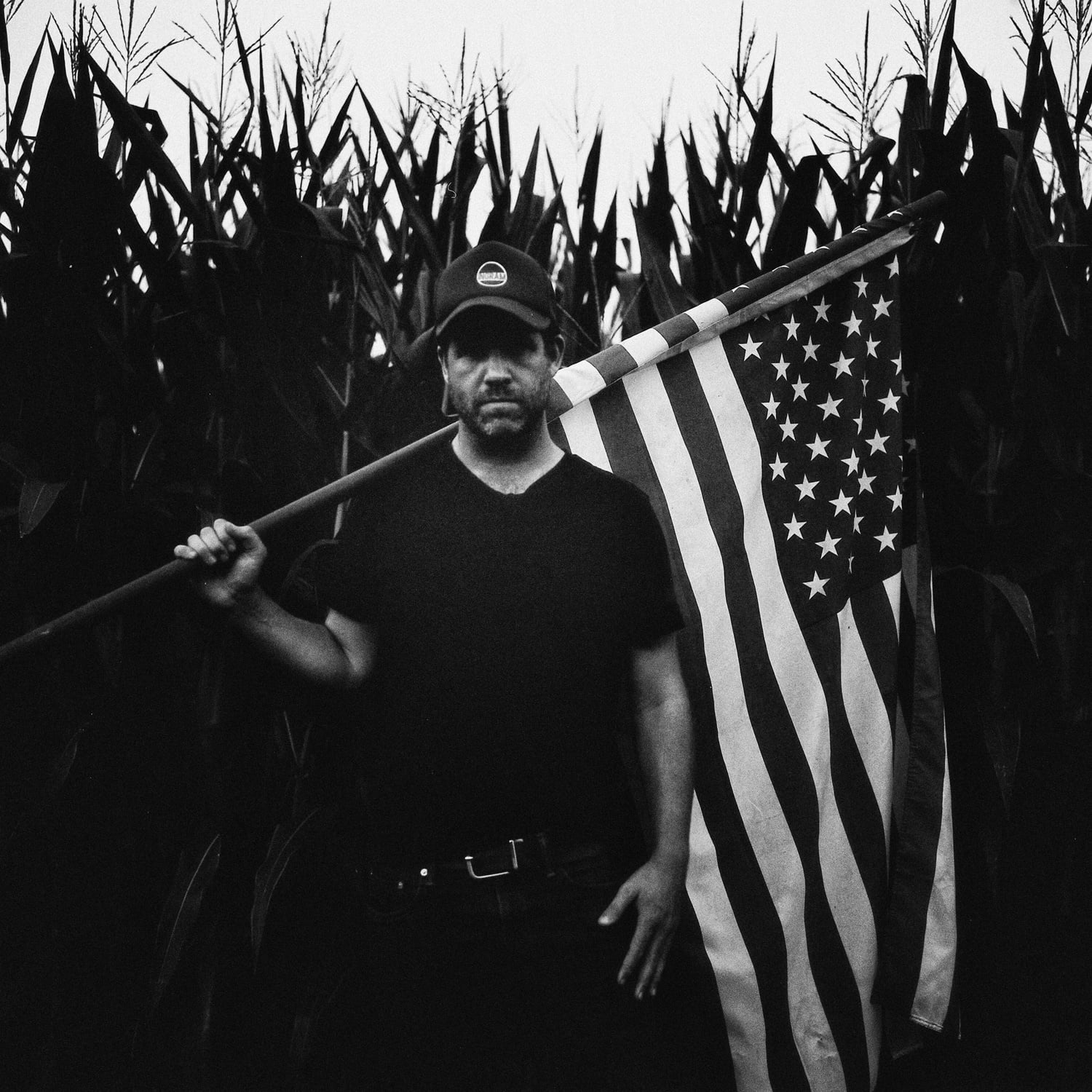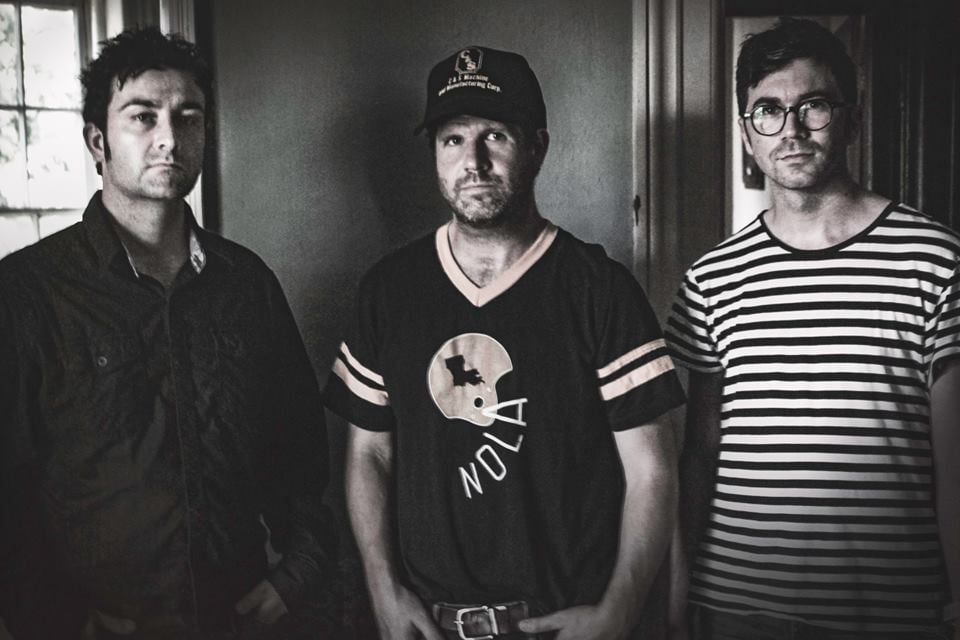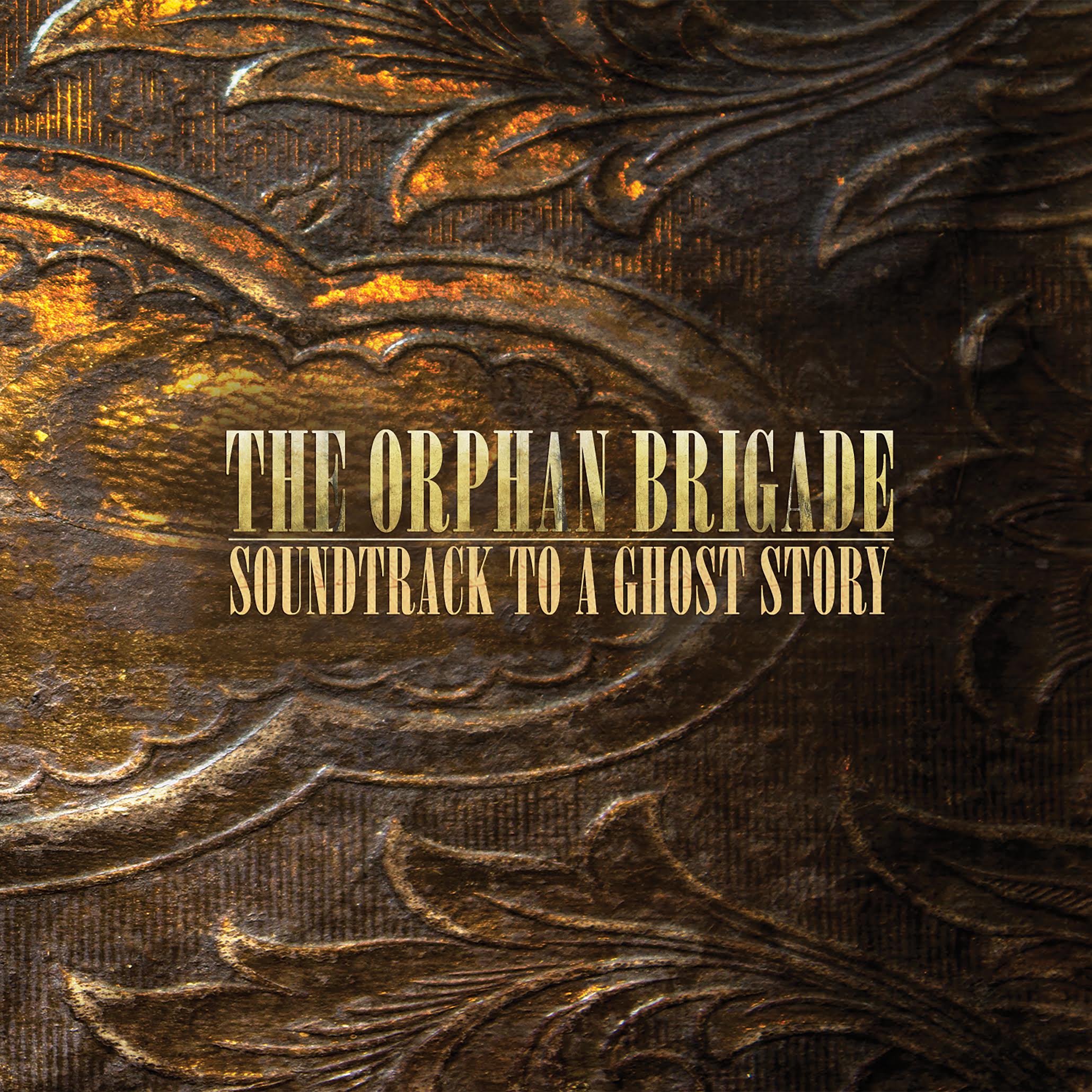We’ve got a fine collection of new tracks, videos, and performances for you this week in our premiere round-up, You Gotta Hear This!
Don’t miss some stellar bluegrass from genre staples – and labelmates – the Grascals, who are celebrating their 20-year anniversary, and Chris Jones & the Night Drivers. The former celebrate their heroes, the Osborne Brothers, with a cover of “Georgia Pineywoods” while the latter get topical while poking fun at doomsday rhetoric on “What If You’re Wrong.”
Jazzy roots duo Winterlark bring us a charming number with a somewhat unlikely subject– emojis. Well, and love gone not-so-right, too. Felled Oak, AKA Brian Carroll, also debuts “Taplines,” a track written while he worked the maple syrup season in Vermont. Singer-songwriter Amy Speace considers the construction of “The American Dream” with a brand new, summery music video and Spooky Mansion performs the title track from his upcoming album, What About You?, live outdoors on the ranch.
Don’t miss Julian Taylor’s debut of a brand new music video for “Pathways,” a song released earlier this week about family, connection, and inter-generational perspective that features the one and only Allison Russell.
To cap it all off, we’ve got an exclusive Yamaha Session from flatpicker Trey Hensley that posted to BGS earlier this week, too. It’s all right here and, we’ve said it before and we’ll say it again, but You Gotta Hear This!
Felled Oak, “Taplines”
Artist: Felled Oak
Hometown: Corinth, Vermont
Song: “Taplines”
Album: Smoke on the Hillside
Release Date: September 30, 2024
In Their Words: “All of the tunes on this project were birthed from time tapping trees in the sugarbush this past January here in Vermont. In the dead silence of winter, alone in a cluster of skeletal maples hiking uphill, I found myself humming and whistling melodies to keep myself (and the winter birds) company. Some of those melodies stuck and I’d pull out my phone, make a quick voice recording then when I got home transcribe them on the mandolin and octave mandolin.
“‘Taplines’ was a melody that fell beneath my own fingers effortlessly and when I brought it to good friend and musical partner, Mark Burds, a smile crept across his face as we played it together for the first time. All of these tunes were recorded in luthier workshops and small, personal spaces around central Vermont and featuring my closest musical friends. It’s music to be shared and played together, to connect. Intimate, organic, and honest.” – Brian Carroll, Felled Oak
“‘Taplines’ was really fun to put clawhammer on, because it’s one of those simple yet beautiful melodies that falls so nicely on banjo and it’s so satisfying to groove on.” – Mark Burds, banjo
Track Credits:
Brian Carroll – Octave mandolin, mandolin, upright bass, acoustic guitar
Mark Burds – Banjo
The Grascals, “Georgia Pineywoods”
Artist: The Grascals
Hometown: Nashville, Tennessee
Song: “Georgia Pineywoods”
Album: 20
Release Date: August 23, 2024
Label: Mountain Home Music Company
In Their Words: “I don’t believe The Grascals would be in existence without The Osborne Brothers. Their heavy impact and influence on us is one of the main reasons we all love bluegrass music so much. ‘Georgia Pineywoods’ is a classic Boudleaux and Felice Bryant song originally recorded by The Osborne Brothers and it just felt very fitting for us to include it on this album celebrating our 20th band anniversary. We will always salute The Osborne Brothers’ music and their continued inspiration to The Grascals!” – Jamie Johnson
Track Credits:
Kristin Scott Benson – Banjo
Danny Roberts – Mandolin
Jamie Johnson – Guitar, lead vocals
Terry Smith – Bass, baritone vocals
John Bryan – Guitar, tenor vocals
Jamie Harper – Fiddle, vocals
Chris Jones & the Night Drivers, “What If You’re Wrong”
Artist: Chris Jones & The Night Drivers
Hometown: Nashville, Tennessee
Song: “What If You’re Wrong”
Release Date: August 23, 2024
Label: Mountain Home Music Company
In Their Words: “Jon Weisberger and I co-wrote the song as a conversation with a conspiracy theorist. It’s meant to be a light-hearted look at the subject – I’m pretty sure it’s the first bluegrass song to mention chem trails! – but it does ask a serious question: When something earth-shaking is predicted, whether it’s the end of the world, a change of government, or just the results of a major ballgame, what do you do when it doesn’t happen? Do you question your sources or double down? We have so much of this in the era of social media and different realities we live with, it seemed pretty timely, and we had fun with it.” – Chris Jones
Amy Speace, “The American Dream”
Artist: Amy Speace
Hometown: Nashville, Tennessee
Song: “The American Dream”
Album: The American Dream
Release Date: October 18, 2024
Label: Wind Bone Records
In Their Words: “I’ve worked with Neilson Hubbard and Joshua Britt (their production company is Neighborhoods Apart) on a bunch of videos, so I trusted them to get the vibe of the song. Also, Neilson produced the record and Josh played on it, so I knew they got it. We all wanted to capture that feeling of the freedom of the end of summer. I grew up mostly in a small town with rural countryside all around it and we’d take long drives through the cornfields as the sun set. We shot this on a country drive and an abandoned cabin (also used in the album art) near Franklin, Tennessee. The appearance of the tractor and the train are coincidences.” – Amy Speace
Video Credit: Neighborhoods Apart, Neilson Hubbard and Joshua Britt
Spooky Mansion, “What About You?”
Artist: Spooky Mansion
Hometown: San Francisco, California / Bay Area
Song: “What About You?”
Album: What About You?
Release Date: August 22, 2024 (song); October 31, 2024 (album)
In Their Words: “I wrote ‘What About You?’ with the intention of painting a picture of my life through different stories. The places I’ve been and the people I come from have all made me who I am. In those early days of a relationship, when you’re getting to know someone, there are certain memories that you retell to explain who you are.
“The verses are meant to be quiet, subdued, and more introspective as I try to describe myself. The chorus is bigger and joyful as I turn the attention to the person I’m talking to. In all my experiences, ‘I didn’t even know that I was looking for you.’ It culminates in a repeated anthem at the end as a reminder that despite what you’ve already lived through, there is more in life that will keep changing you and continuously creating you into the person you are. In this case, it was a beautiful woman I’d recently met who is now my wife and love of my life.” – Grayson Converse, Spooky Mansion
Video Credit: Directed by Jacob Butler.
Julian Taylor, “Pathways” (Featuring Allison Russell)
Artist: Julian Taylor
Hometown: Toronto, Ontario, Canada
Song: “Pathways”
Album: Pathways
Release Date: August 21, 2024 (song); September 27, 2024 (album)
Label: Howling Turtle Inc.
In Their Words: “I remember sitting in my living room when the melody and chord patterns just came to me. Often, when I sit down to write music, it’s the first thing that I start playing that sticks, because it’s raw and honest. I worked the progression in several different ways. First on the acoustic guitar and then on the piano. I still have probably upwards of seven or eight takes of it somewhere on my voice notes. Some were quite punk sounding, while others were quite folk sounding. Ultimately, the sound of the melody and progression in 6/8 time seemed to have the most impact on me.
“This song became a lyrical collaboration between two friends of mine that are also neighbors. I was invited to hang out and write with my pals Robert Priest and Rosanne Baker Thornley, who has a studio down the road from me. When I arrived, I showed them what I had been working on and they loved it. We ultimately wanted to write a hopeful song that spoke to our next of kin, and since we all have children who are the most important people in the world to us, we followed that inspiration. I performed with my friend Allison Russell at the Juno Awards this year and asked her if should be interested in collaborating on the song seeing as she is a mother as well and I am so honored that she said yes and brought yet another magical spark to our creation.” – Julian Taylor
Track Credits:
Julian Taylor – Vocal, guitar
Allison Russell – Duet vocal
Colin Linden – Electric Dobro, mandotar, bass, harmony vocal
Gary Craig – Drums, percussion
Jim Hoke – Saxophones
Janice Powers – B3 organ
Winterlark, “Ending With Heart Heart Heart”
Artist: Winterlark
Hometown: Santa Cruz, California
Song: “Ending With Heart Heart Heart”
Album: Sing To Me About Tomorrow (EP)
Release Date: August 23, 2024 (song); September 20, 2024 (EP)
Label: Squink Records
In Their Words: “It seemed that the world was ready for a song about the insidiousness of emojis, so I tried to write a modern-day song about a poorly communicated break-up, like the one in Elvis Presley’s rock-n-roll classic ‘Return to Sender.’ One of the keys to the song is the pairing of the sad lyrics with the happy, infectious beat driven by Kristin and drummer Chris Haskett. They make everything swing.” – Sweeney Schragg
“When Sweeney shared the core idea of this song, I do believe I laughed – uncomfortably. Aren’t we all guilty of throwing emojis at people instead of real words? Sweeney left six spots open for bass fills, a better gift than a box of black licorice (my favorite).” – Kristin Olson
Track Credits:
Sweeney Schragg – Guitar, vocals
Kristin Olson – Upright bass, vocals
Chris Haskett – Drums
Yamaha Sessions: Trey Hensley, “Hold What You Got”
On a sunny Sunday afternoon just outside of Nashville, Tennessee earlier this summer, BGS linked up with award-winning guitarist, songwriter, and jaw-dropping flatpicker Trey Hensley to kick off a new series of Yamaha Sessions. Hensley, a GRAMMY nominee and the reigning IBMA Guitar Player of the year, pulled his custom Yamaha FG9 R out of its road case to shred through a cover of a classic Jimmy Martin number, “Hold What You Got.”
Hensley is a picture perfect modern demonstration of how bluegrass trailblazers, like Martin, blurred the lines between country, old-time, bluegrass, and beyond. His voice reminds of honeyed country singers like Randy Travis, while his blisteringly quick picking and remarkable articulation are built on Tony Rice and Clarence White building blocks – but simultaneously, those techniques are as forward-looking and contemporary as his peers, Billy Strings, Jake Workman, and others. Hensley pulls limitless tone and warmness from his Yamaha FG9 R, even while approaching the song with near-aggression, ripping through acrobatic triplet licks and leaning into ugly delicious chromaticism in every solo.
Photo Credit: Julian Taylor by Robert Georgeff; the Grascals by Laci Mack.
